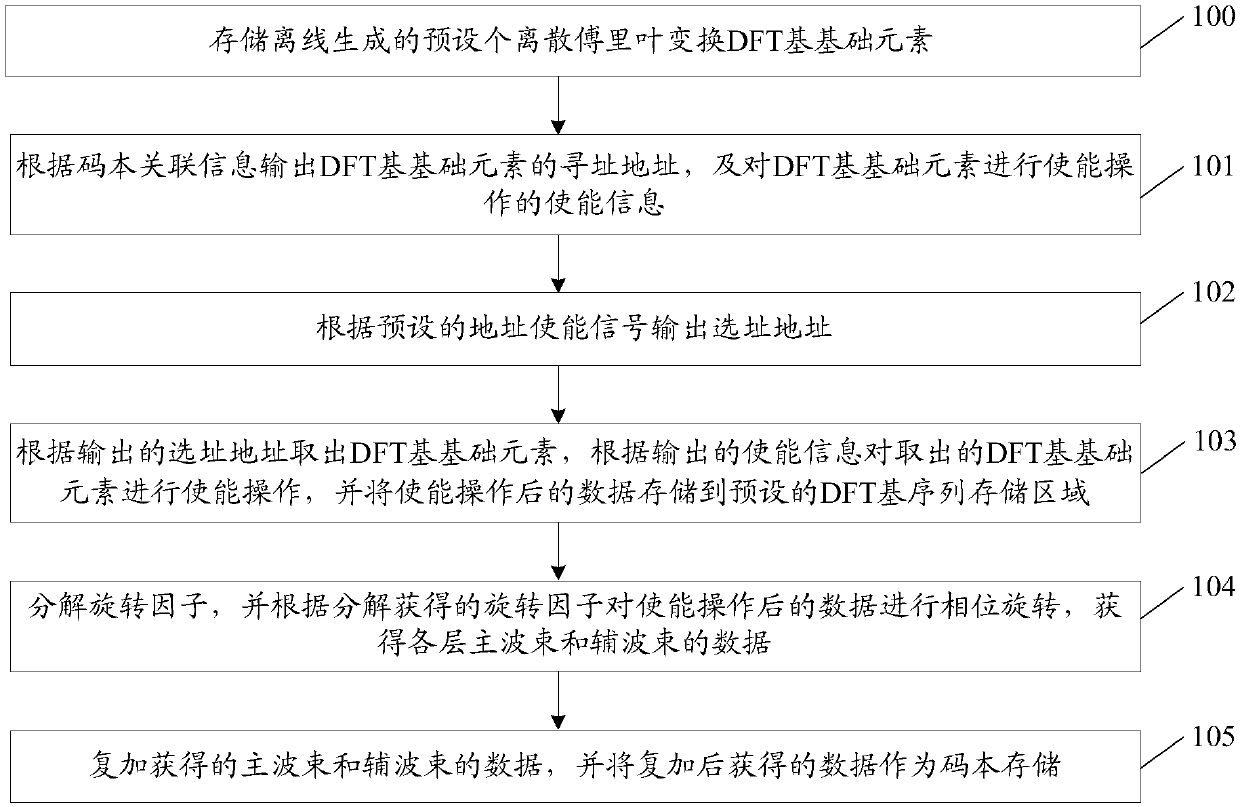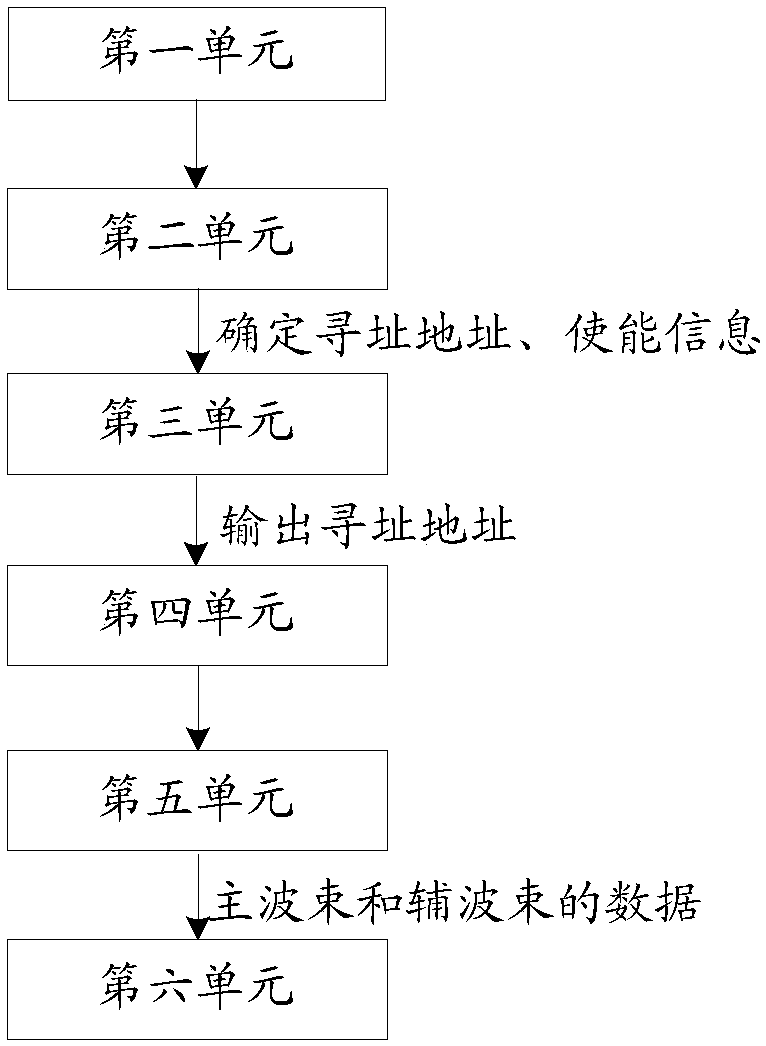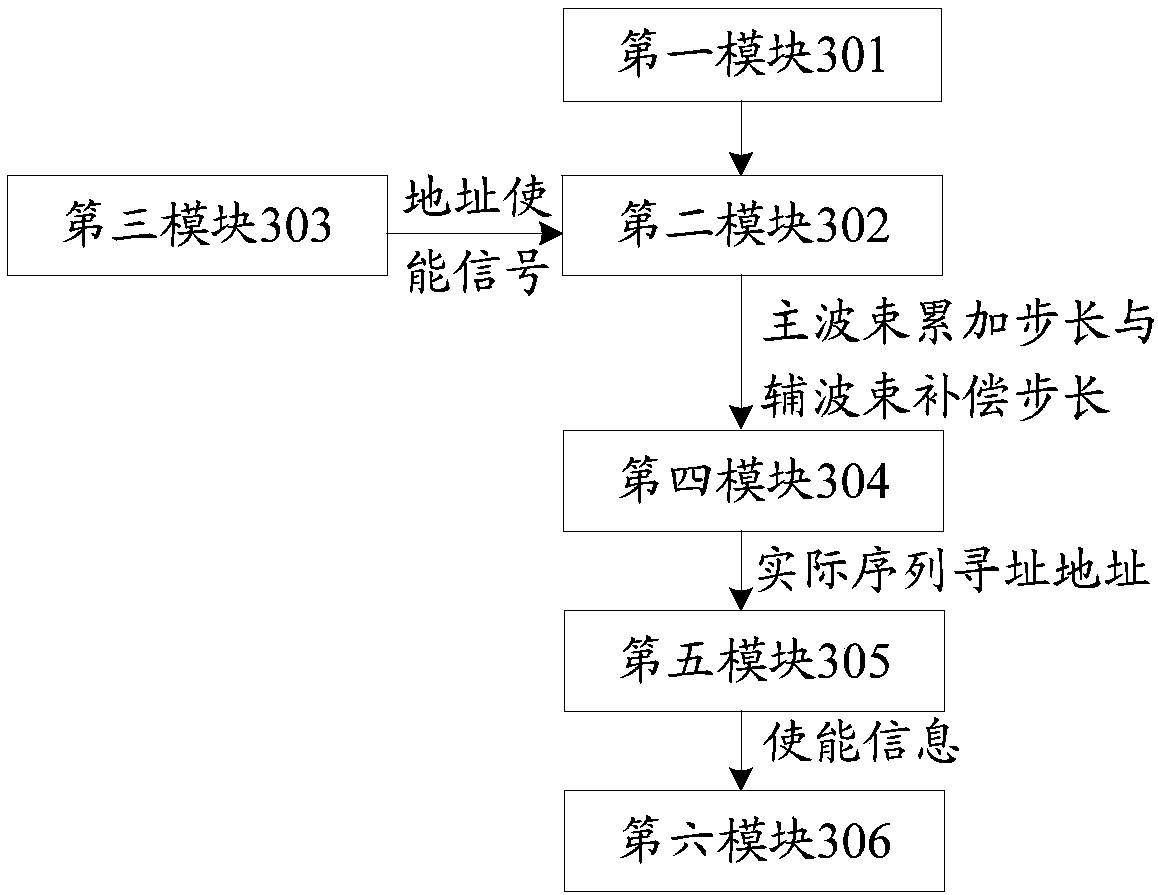Method and device for generating a codebook
A codebook and codebook indexing technology, applied in radio transmission systems, electrical components, transmission systems, etc., can solve problems such as huge storage space, high computational complexity, and difficult precoding
- Summary
- Abstract
- Description
- Claims
- Application Information
AI Technical Summary
Problems solved by technology
Method used
Image
Examples
application example 1
[0151] The precoding coefficients in this application example include: two-dimensional antenna configuration, antenna horizontal port number N1=4, antenna vertical port number N2=4 codebook oversampling parameters horizontal oversampling factor O1=4, vertical oversampling factor O2=4 The 32 transmit antenna ports of the first layer, the first level codebook index 1 (first PMI1i 11 =10, first layer second stage codebook index 2 (first PMI2)i 12 = 12, the first layer third codebook index 3first PMI 3i 13 =1, p=1, 2-layer first layer second-level codebook index second PMI i 2,1 =27, 2-layer second-level codebook index second PMI i 2,2 =37.
[0152] This application example first stores the preset DFT base elements generated offline, including: 1680 DFT bases of the first quadrant; and multiplying the DFT base elements of the first quadrant by value; each DFT base element is stored by a corresponding address; each address contains 1 byte for storing the real part of the base ...
application example 2
[0187] According to all the values of N1 and N2, all the value arrays of N1*N2 {2, 3, 6, 8, 10, 12, 14, 16} are formed to obtain the least common multiple of each element in the array 1680. After multiplying With an oversampling factor of 4, the number of corresponding DFT basis elements is 6720; then, the quadrant compression storage method is used to store only the values of the first quadrant of all DFT bases, so that a total of 1680 DFT bases need to be stored, and at the same time, it is considered to avoid The power factor is When the multiplication operation, and then store 1680 DFT base multiplied by As a result, the addresses for storing the basic elements of each DFT base can be obtained by the following formula:
[0188]
[0189]
[0190] The basic elements of the DFT base are stored in sequence; the real part and the imaginary part of each DFT base each occupy 1 byte (Byte), and a storage address is used, and the address in this example is 0-3359.
...
PUM
 Login to View More
Login to View More Abstract
Description
Claims
Application Information
 Login to View More
Login to View More - R&D
- Intellectual Property
- Life Sciences
- Materials
- Tech Scout
- Unparalleled Data Quality
- Higher Quality Content
- 60% Fewer Hallucinations
Browse by: Latest US Patents, China's latest patents, Technical Efficacy Thesaurus, Application Domain, Technology Topic, Popular Technical Reports.
© 2025 PatSnap. All rights reserved.Legal|Privacy policy|Modern Slavery Act Transparency Statement|Sitemap|About US| Contact US: help@patsnap.com



